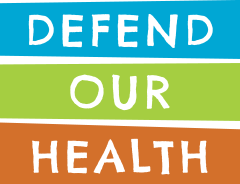Home > Resources
Resources
Fact Sheet for Investors: Reducing Disparate Health Burdens of Full Supply Chains by Major PET and Polyester-Consuming Corporations
03.21.2024
The beverage and fashion industry’s reliance on polyethylene terephthalate (PET) plastic for a significant portion of its packaging and polyester source material creates avoidable financial and business risks.
Companies Who Reported PFAS in Products to the State of Maine
01.03.2024
Before the Maine Legislature extended the reporting deadline (until January 1, 2025), more than sixty companies submitted information to the Maine Department of Environmental Protection (DEP) on products they sell in Maine that contain PFAS. Under a Freedom of Access Act request for public records, Defend Our Health obtained and analyzed non-confidential data on PFAS in products submitted by forty-one of these companies.
Download Summary on PFAS in Maine Products and Brand-Name Products with PFAS
Comments of Defend and Partners – EPA Hazardous Organic NESHAP (HON) Rule
07.07.2023
The proposed HON rule, while long over-due and a major step in the right direction, falls far short of meeting the environmental justice commitments of the Biden Administration and the requirement to protect human health from toxic air emissions under the Clean Air Act.
Toxic Chemical Testing Fund – Program Guidelines
07.01.2020
Through generous foundation support, a dedicated fund has been created to pay for the chemical testing of products and packaging, provided that such analytical work is integrated into a strategic campaign to drive toxic substances out of marketplace. These are the program guidelines.
Black Lives Matter – Joint Statement
06.04.2020
We condemn the recent murders of George Floyd, Ahmaud Arbery, Breonna Taylor, and countless other Black lives lost to racial violence. We call for accountability for the police officers who have taken these lives, for those that have allowed these lives to be taken, and for a reform of a law enforcement system that allows for the devaluation and dehumanization of Black life. Here is our joint…
Defend Frontline Workers: Sign-On Letter to Maine’s Congressional Delegation
04.10.2020
“As representatives of Maine’s public health, medical, labor and immigrant communities, we remain very concerned, however, that our frontline workers still lack both adequate personal protective equipment (PPE) and widespread access to coronavirus testing. One in six confirmed coronavirus cases in Maine are among healthcare workers. But all essential workers are putting their lives on the line…
Known Uses of Phthalates in Food Contact Materials in the United States
02.20.2020
Adapted from the scientific literature and technical reports by Environmental Health Strategy Center for the Coalition for Safer Food Processing & Packaging, February 2020. Learn more about the Coalition at www.toxicfreefood.org.
Strengthen the Draft Report of the Maine Governor’s PFAS Task Force
11.26.2019
The draft report of the Governor’s PFAS Task Force provides a solid foundation, but must be strengthened to meet the Executive Order’s charge to assess the extent of contamination, and recommend actions to protect public health and the environment, from per- and polyfluoroalkyl substances (PFAS).
Recent Testing Reveals More PFAS Contamination of Public Drinking Water Systems in Maine
10.30.2019
Source : Summary of PFAS sampling for Maine public water systems, Maine CDC Drinking Water Program, October 2019
U.S. State and Market Leadership on Food Contact Chemicals
10.24.2019
Presentation by Mike Belliveau, Environmental Health Strategy Center executive director, at a Food Packaging Forum workshop in Zurich, Switzerland, on October 24, 2019.
Unsafe Levels of PFAS Chemicals at a Maine Dairy Farm
06.17.2019
Summary of levels of PFAS found at Stoneridge Farm compared to action levels.
Sludge Spreading Threatens PFAS Pollution of Food & Drinking Water
06.17.2019
Information on PFAS being a known contaminant of sludge.
Food is the Largest Source of PFAS Exposure for Most People
04.17.2019
Dietary exposure is likely the largest source of exposure to per- and polyfluoroalkyl substances (PFAS) for most people.
Newer PFAS Have Many of the Same Problems as Old
04.17.2019
There is general agreement, even from the chemical industry, that older PFAS chemicals, typified by PFOA and PFOS, are dangerous to health and the environment. However, some of the same companies that promoted these older chemicals claim newer PFAS do not warrant concern. This claim does not hold up to scrutiny.
Phthalates: Mounting Evidence of Human Health Effects
03.07.2017
In the last three years, 65 new epidemiological (human) health studies have been published in the the peer-reviewed scientific literature, with almost all revealing associations between exposure to phthalates and developmental, reproductive or other human health endpoints.
Foods that Expose Vulnerable Groups to Phthalates
02.28.2017
A scientific literature review concluded that the majority of dietary exposure to the phthalate DEHP for the most vulnerable groups (women of reproductive age, babies and teenagers) comes from eating dairy products, with additional exposure from oils and fats, meats, and grains.
Phthalates in Food
02.28.2017
Widely used hormone-disrupting chemicals known as phthalates threaten the health of pregnant women and children. The food we eat is the major exposure pathway. Phthalates end up in your favorite foods when used in food processing equipment and food packaging.
Safe-Drinking-Water Action Guide
10.01.2016
Arsenic can harm health for a lifetime. It causes cancer and lowers intelligence. Yet, tens of thousands of Mainers are ingesting unsafe amounts of arsenic that come from the bedrock where wells are drilled. This four-page Safe-Drinking-Water Action Guide published in 2016 by the Strategy Center uses Maine state data showing that in a state where half the population drinks and cooks with well…
